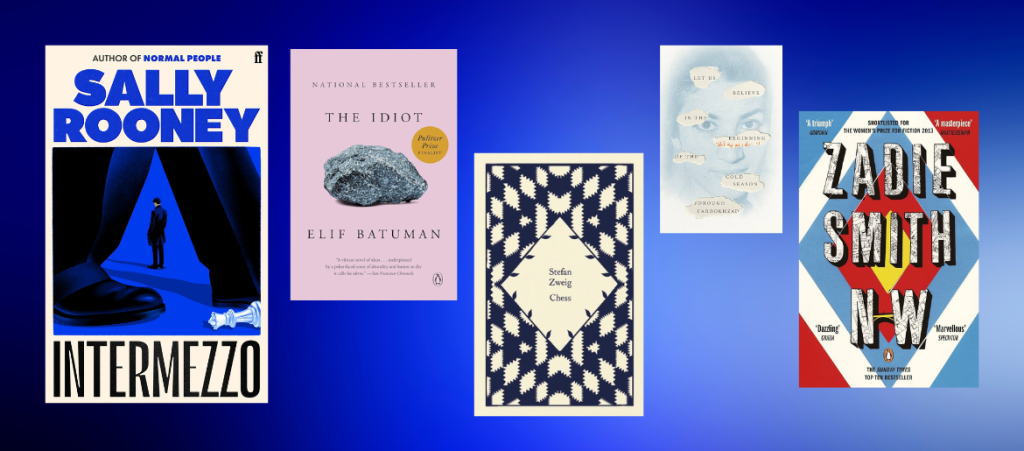
Sally Rooney’s Intermezzo is a novel of dichotomies. Yes, it delivers the quintessential Rooney contemplations on the minutiae of human relationships that fans love in her previous works. But Intermezzo takes it up a notch by creating even more space to explore each part that makes the whole. It follows two brothers, the elder Peter and young Ivan, mourning the death of their father and navigating relationships with others and each other.
The title is in reference to a chess strategy, and in Rooney’s novel the central image is of opposing players on a chess board, each intently focused on and responding to the ever-shifting position of the other. Opposites meet and merge, light is thrown into the dark, the echo of death sings back as life, and Intermezzo operates as a house of mirrors. Rooney’s ultimate message? The final form of any shared thing is not either/or, but both.
If you loved Intermezzo and want to read more like it (or if you don’t have a copy and want a similar reading experience), these six books also explore life’s contrasts.
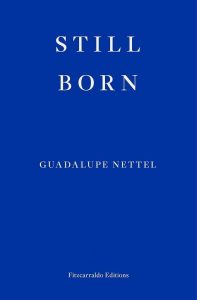
Still Born by Guadalupe Nettel
What’s similar? Themes of deception and devotion.
Guadalupe Nettel’s Still Born approaches the decision of whether or not to have children through the dual lens of two women with opposing views. Once united in their ambivalence towards motherhood, friends Laura and Alina must confront the certainty in their prior convictions as one pursues reproductive sterilisation while the other experiences a complicated pregnancy. What does it mean to be a mother? Like Rooney, Nettel traces the forked lines of choice in answering this question, the contradictions in the beliefs we hold true, and the paths we commit ourselves to.
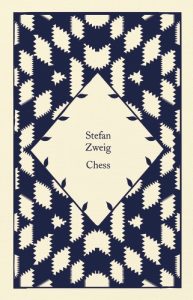
Chess Story by Stefan Zweig
What’s similar? The language and sense of reality.
Concerned with the corners of human limitation, Stefan Zweig’s Chess Story bears more than one resemblance to Rooney’s Intermezzo; a novel about a lawyer and a chess player, exploring the tension between who you are and who you are forced to be. Zweig also writes directly into Rooney’s beloved miscommunication trope – or more specifically, the inability to transcribe human experience into a common tongue, the paradox of this communal meeting point, and the irony in writing about it! If not a direct influence, Chess Story is a meta-literary companion to Intermezzo.
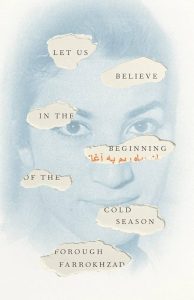
Let Us Believe in the Beginning of the Cold Season by Forough Farrokhzad
What’s similar? Themes of indulgence and sacrifice
Forough Farrokhzad is a feminist trailblazer and an Iranian literary staple, and this posthumous collection of her poetry looks desire in the eye. “A spark devours me”, she writes, meeting Rooney at the intersection where love is both a gift and a punishment. Farrokhzad’s voice breaks through from the afterlife, speaking with intimacy and a bold, brazen tenor. But one key distinction: where the details of Rooney’s personal life remain elusive, Let Us Believe in the Beginning of the Cold Season features confessions from Farrokhzad’s real, infamous relationships.
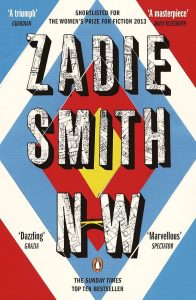
NW by Zadie Smith
What’s similar? Exploring the liminal
Brushing up against the lives of others, seeing the day-to-day through a new vantage point, stepping back in horror and then laughing – Zadie Smith’s characters in NW awaken with both grief and humour to lives aged-out of youthful naiveté. Depicting four childhood friends navigating modern adulthood, Smith takes the Rooney-equse principle of ‘as above so below’ (or, ‘what you do in the everyday adds up to a whole life’) and infuses it with wit that soothes the hard truths. In NW, the passage of time is its own place for us to exist – overfilled yet painfully insufficient, inhabited without choice… but also, a place to be enjoyed.
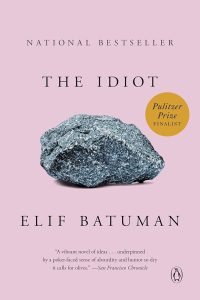
The Idiot by Elif Batuman
What’s similar? The underlying philosophical questions
What are the scripts that write your life? By whose hand are they written? Like Ivan in Intermezzo, Selin in The Idiot also reflects on the works of philosopher Søren Kierkegaard as she comes of age and falls in love with someone older (also named Ivan, in a perfect Dostoevsky trifecta). Against the backdrop of Harvard in 1995, Selin and Ivan play a cat-and-mouse game around the tender centre of their connection, through the then-freshly invented medium of e-mail. Writing their own selves into existence, defining one another by the unsaid, Batuman’s semi-autobiographical novel doubles as a looping answer to its own central question.
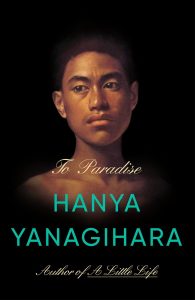
To Paradise by Hanya Yanagihara
What’s similar? A shared theme, best written by Rooney as: “the conceptual collapse of one thing into another, all things into one.”
In an alternate New York set across three time periods (1893, 1993, and 2093), Yanagihara imagines different versions of a life that are only just outside the ‘ordinary’, like Rooney does. The details from each setting overlap and build upon one another to create a world that feels very familiar in some ways, but abstract and unusual in others. It’s the known reality, historical fiction and dystopian future all converged into one, bringing everything longed for, loved and lacked into one place. What is ‘paradise’: the ethereal, unreachable place we’re trying to get to, or the act of trying to get there at all?

Comments are closed.